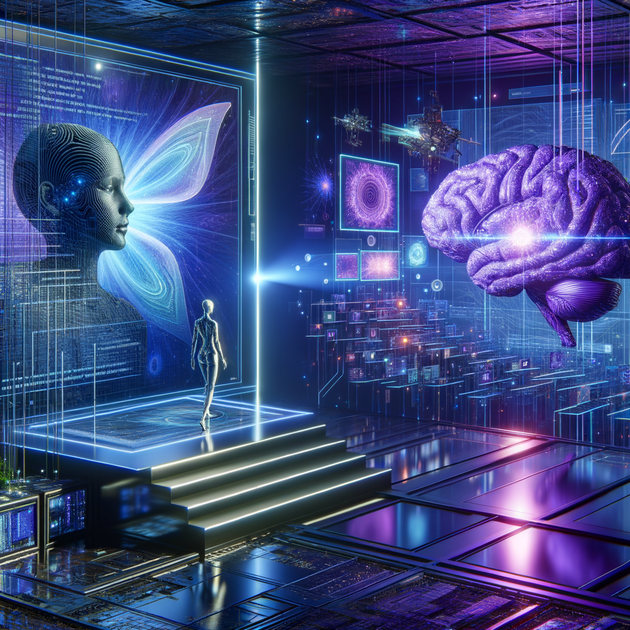Beyond the Illusion: Unveiling the True Nature of Large Language Models

In the dynamic world of artificial intelligence, few topics stir as much debate as the distinction between large language models (LLMs) like OpenAI’s GPT-4 and genuine intelligence. As LLMs become more sophisticated, it raises a critical question: are LLMs true AI, or are they merely adept at simulating intelligence? To navigate this enigma, we must explore what defines “real” AI, how LLMs function, and the deeper nuances of intelligence itself.
Defining “Real” AI
Artificial Intelligence (AI) is a broad spectrum encompassing technologies designed to perform tasks that typically require human intelligence. These tasks include learning, reasoning, problem-solving, understanding natural language, perception, and even creativity. AI can be categorized into two main types:
-
Narrow AI: These systems are designed and trained for specific tasks. Examples include recommendation algorithms, image recognition systems, and, indeed, LLMs. Narrow AI excels in its particular domain but lacks general intelligence.
-
General AI: Also known as Strong AI, this type possesses the ability to understand, learn, and apply knowledge across a wide range of tasks, mimicking human cognitive abilities. Currently, General AI remains theoretical, as no system has reached this level of comprehensive intelligence.
The Mechanics of LLMs
LLMs, such as GPT-4, are a subset of narrow AI. They are trained on vast amounts of text data from diverse sources, learning patterns, structures, and meanings of language. The training process involves adjusting billions of parameters within a neural network to predict the next word in a sequence, enabling the model to generate coherent and contextually relevant text.
Here’s a simplified breakdown of how LLMs operate:
-
Data Collection: LLMs are trained on diverse datasets comprising text from books, articles, websites, and other written sources.
-
Training: Utilizing techniques like supervised learning and reinforcement learning, LLMs fine-tune their parameters to minimize prediction errors.
-
Inference: Once trained, LLMs can generate text, translate languages, answer questions, and perform other language-related tasks based on learned patterns.
Simulation vs. Genuine Intelligence
The debate about whether LLMs are genuinely intelligent revolves around the distinction between simulating intelligence and possessing it.
-
Simulation of Intelligence: LLMs excel at mimicking human-like responses. They generate text that appears thoughtful, contextually appropriate, and sometimes creative. However, this simulation is rooted in pattern recognition rather than understanding or reasoning.
-
Possession of Intelligence: Genuine intelligence implies an understanding of the world, self-awareness, and the ability to reason and apply knowledge across diverse contexts. LLMs lack these qualities. They do not possess consciousness or comprehension; their outputs are the result of statistical correlations learned during training.
The Turing Test and Beyond
One classic method of evaluating AI’s intelligence is the Turing Test, proposed by Alan Turing. If an AI can engage in a conversation indistinguishable from a human, it passes the test. Many LLMs can pass simplified versions of the Turing Test, leading some to argue they are intelligent. However, critics point out that passing this test does not equate to true understanding or consciousness.
Practical Applications and Limitations
LLMs have shown remarkable utility across various fields, from automating customer service to assisting in creative writing. They excel at tasks involving language generation and comprehension. However, they possess certain limitations:
-
Lack of Understanding: LLMs do not comprehend context or content. They cannot form opinions or grasp abstract concepts.
-
Bias and Errors: They can perpetuate biases present in their training data and occasionally generate incorrect or nonsensical information.
-
Dependence on Data: Their capabilities are limited to the scope of their training data. They cannot reason beyond the patterns they have learned.
For instance, while LLMs can generate strikingly human-like text, they might fall short in tasks requiring genuine reasoning or deep understanding of the subject matter. This highlights the fundamental difference between narrow AI and the broader aspirations of General AI.
The Future of LLMs and AI
As we continue to unlock the potential of AI, the line between simulation and genuine intelligence might blur further. LLMs exemplify the incredible achievements possible through advanced machine learning techniques. While they currently simulate the appearance of intelligence, true understanding and reasoning akin to human cognition remain elusive.
What lies ahead is a thrilling exploration of the next boundaries in AI technology, where the focus might shift from mere simulation to creating systems with deeper cognitive capabilities. For now, LLMs stand as powerful tools, showcasing both the potential and the limits of our current AI advancements.
